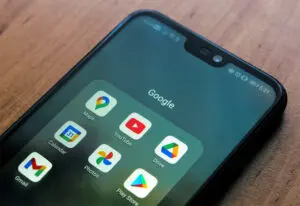
Influencers vs. Brand Ambassadors: Which Should You Choose for Your Social Media Strategy?
You’ve taken the time to craft your message, polish your visuals, and launch your brand. Now how do you get it in front of your ideal audience? Considering 40% of the global population uses social media, you might want to start with channels like Facebook, Instagram, Youtube, and Twitter. But just posting content to your feeds isn’t necessarily enough to give your brand the edge. In fact, as of 2018, the average, organic reach for a page’s posts is less than 6%.
So how do today’s brands stay competitive and connect with their audiences? “3.028 Billion people actively use social media,” a recent article by Influencer Marketing Hub explains. “Inevitably, these people look up to influencers in social media to guide them with their decision making.”
“Today’s consumers crave authenticity. They want to build a personal relationship with brands.”
Open up Instagram right now. We bet you can’t scroll for a full minute without someone promoting a brand, product, or service. From Doug the Pug posing with his Starbucks pup-kin spice latte, to that girl from your high school who’s now a famous food blogger. Social media influencers are everywhere.
Of course, brands have relied on celebrity endorsements before. Doris Day sold road rolling equipment in the 1950s. “Mean” Joe Green smiled over a Coca-Cola. For decades, the equation was simple: famous people help sell stuff. But social media has transformed the relationship between brands, consumers, and influencers. Today’s consumers crave authenticity. They want to build a personal relationship with brands.
That’s why—from outdoor apparel to fashion and food—more companies are leaning on influencers and brand ambassadors. It’s an effective way to share their values and products with the world.
But what’s the difference?
It’s common to hear the terms “influencer” and “brand ambassador” used interchangeably. But each fills a distinct role in the digital marketing space. Knowing the difference will help you choose which partnerships best benefit your brand.
Influencers
When you were a kid, and people asked what you wanted to be when you grow up, what was your answer? Veterinarian. Doctor. Firefighter. Teacher. Influencer? For the next generation of young professionals, it’s a realistic career choice. Social media gives everyday people the chance to transform themselves into personal brands. And they can do it from the comfort of their social media networks. As the Digital Marketing Institute notes, “People are turning to their favorite Instagram models, Twitter personalities, and YouTube stars for advice and recommendations on purchasing decisions.”
And the ability to build a loyal audience pays off. Influencers who have up to 1 million followers can charge $10,000 per post. And that’s pocket change for YouTube gamers with over a million viewers. Their content can come with a steep $250,000 per post price tag.
So what makes influencers tick?
Using their expertise, celebrity status, or just an uncanny ability to relate to their followers, influencers are able to, well… influence people. Influencer Marketing Hub writes that influencers are people with the power to affect others’ buying choices.
As Dazed points out, “The term is still broad, encompassing everyone from Kendall Jenner, the highest-paid model in the world, to Instagrammers with millions of followers who nobody IRL has ever heard of.”
Keep in mind that influencers have their own, established channels. That could be a gamer’s YouTube channel, a fashion blogger’s Instagram feed, or some combination of different channels. For example, many bloggers also have a well-established Instagram following. This demonstrates the importance of working with the right influencer. You could connect your brand with thousands, or even millions of people who might otherwise never see it.
Some major drawbacks?
Influencers also likely work with other brands, including competitors. Depending on your market or niche, that could be a problem.
Finally, influencers create their own content featuring your brand, product, or service. This can save you the time and effort it takes to conceptualize, design, and publish content. But, it also gives you less creative control over how your brand gets portrayed. With influencers, there are no guarantees. It’s their job to influence their audience—whether that’s for better or worse is for them to decide.
The current state of influencers
When influencers first hit the social media scene, they provided a refreshing break from highly-paid celebrity endorsements. They sprang from an intimate DIY culture. Reading their blogs, watching their videos, and seeing their pictures felt like catching up with an old friend. And tech allowed them to share these thoughts and images with millions around the world.
But now, influencers—and wannabes— have become more ubiquitous. In fact, many marketing experts believe the dog days of influencer culture are drawing to a close.
Plus influencing itself has changed. Increasingly, influencers work with PR teams to manage their image, build audiences, and connect with brands. As a result, many have lost that “real person” vibe that propelled them to fame in the first place.
The rise of micro-influencers
This may account for the recent shift to micro-influencers. Micro-influencers have around 10,000 to 500,000 followers across social media channels. They tend to have niche interests, which means their audiences are often engaged to the brink of fanaticism. Plus, they’re in every sector. From Alexandra Lerner’s work in yoga and wellness, to @hellorigby’s deep-dives on fashion and dogs.
Brand Ambassadors
Brand ambassadors, on the other hand, grow their brand alongside yours. They can be individuals, groups of people, or even fictional characters. These long-term partnerships are more collaborative and mutually-beneficial. Just try to imagine Nike without Michael Jordan. Priceline without William Shatner. Or even Frosted Flakes without Tony the Tiger.
In other words, brand ambassadors embody your brand’s values, mission, and ethics. They work to humanize your brand on social media. And as Origin points out, “They usually have some form of attachment to your product or brand, often helping to create, refine, or use it.” For example, professional athletes make excellent ambassadors for sportswear companies.
So, influencers or brand ambassadors?
It’s impossible to answer the question without defining your business objectives and campaign goals. Sure, you could pay to have Selena Gomez present your brand to her 157.7 million followers. But what’s the point if they aren’t going to care about your niche product or service? Are you trying to raise awareness and get your brand in front of as many eyes as possible? Or do you want someone to represent you in the market for the long haul? Do you need to boost engagement for a particular contest, event, or promotion? These are just a few of the things you’ll need to consider as you work through your social media strategy.
Define your marketing goals
Choosing to partner with an influencer or a brand ambassador is no small decision. And it hinges on what you’re hoping to accomplish with the partnership. Influencers can raise awareness about developments with your brand or company. Things like promoting contests, events—especially if the influencer will be attending—or new products.
To raise awareness about your brand, a long-term relationship with a brand ambassador may be better.
Will they connect you with the right people?
There are a few things to consider here. First, does the potential influencer have the following they claim to? In the world of hyper-growth, many influencers are trying below-the-belt tactics to grow their presence. Influencers who buy followers, or solicit engagement by spamming followers, are going to hurt not help your brand. As Origin points out, “It is important to understand if your influencer is speaking to a bunch of robots or a group of humans who will be interested in your brand.”
So, first, make sure you’re connecting with real people. Next you want to make sure you’re connecting with people who will genuinely appreciate your brand. Beyonce might have 134.1 million followers and the power of the Beyhive, but as a vegan, she’s still not the best face for your new steakhouse.
You also want to consider the age group you’re trying to reach. According to the Digital Marketing Institute, 70% of teens trust influencers more than traditional celebrities. In fact, 4 out of 10 millennials believe their favorite influencers understand them better than their friends. If you’re trying to reach a younger crowd, influencers and micro-influencers might be your best bet.
Are there opportunities to grow together?
In the end, influencers must protect their personal brand above all else—it’s their business, after all. Ambassadors, on the other hand, are usually given inside knowledge of the brand and have opportunities to help shape brand growth through their expertise. These long-term partnerships are paid on a monthly retainer and allow for a more collaborative approach to social media marketing.
Influencers and brand ambassadors can be invaluable in growing your brand’s following. Whether you’re partnering with YouTube gamers, Instagram photographers, or celebrities, you’ll be able to tap into otherwise unattainable channels. The important thing is to understand the goals and key performance indicators of your campaign. From there, you can decide how an influencer or brand ambassador can help you achieve them. If you have questions about how to get into the influencer game, a digital marketing agency like Savy can help you connect with the right spokespeople. Contact us to start it up.
Recent Posts
How to Rebrand Your Instagram for Better Engagement and Brand Recognition
Your Instagram presence can act as a beacon for brand recognition and customer engagement. It’s about painting a picture so compelling that your audience cannot help but be drawn to […]
Read MoreFrom Clicks to Conversions: The Science of High-Performing Digital Ads
The journey from interest to purchase is often paved with digital advertisements. However, not all digital ads are crafted equally. While some fade into the background, others command attention and […]
Read MoreBrand Consistency Examples That Will Make You Rethink Your Marketing Strategy
A consistent and strategic brand identity across all platforms is not just beneficial; it’s essential. By exploring real-world brand consistency examples, we uncover the immense power of maintaining a coherent […]
Read More3 Ways to Transform Blogs With SEO and Make Google Love Your Content
As marketers and business owners, our goal is to ensure the blogs we publish confidently stride into the spotlight of Google’s top search results. Achieving this requires great content, but […]
Read More



